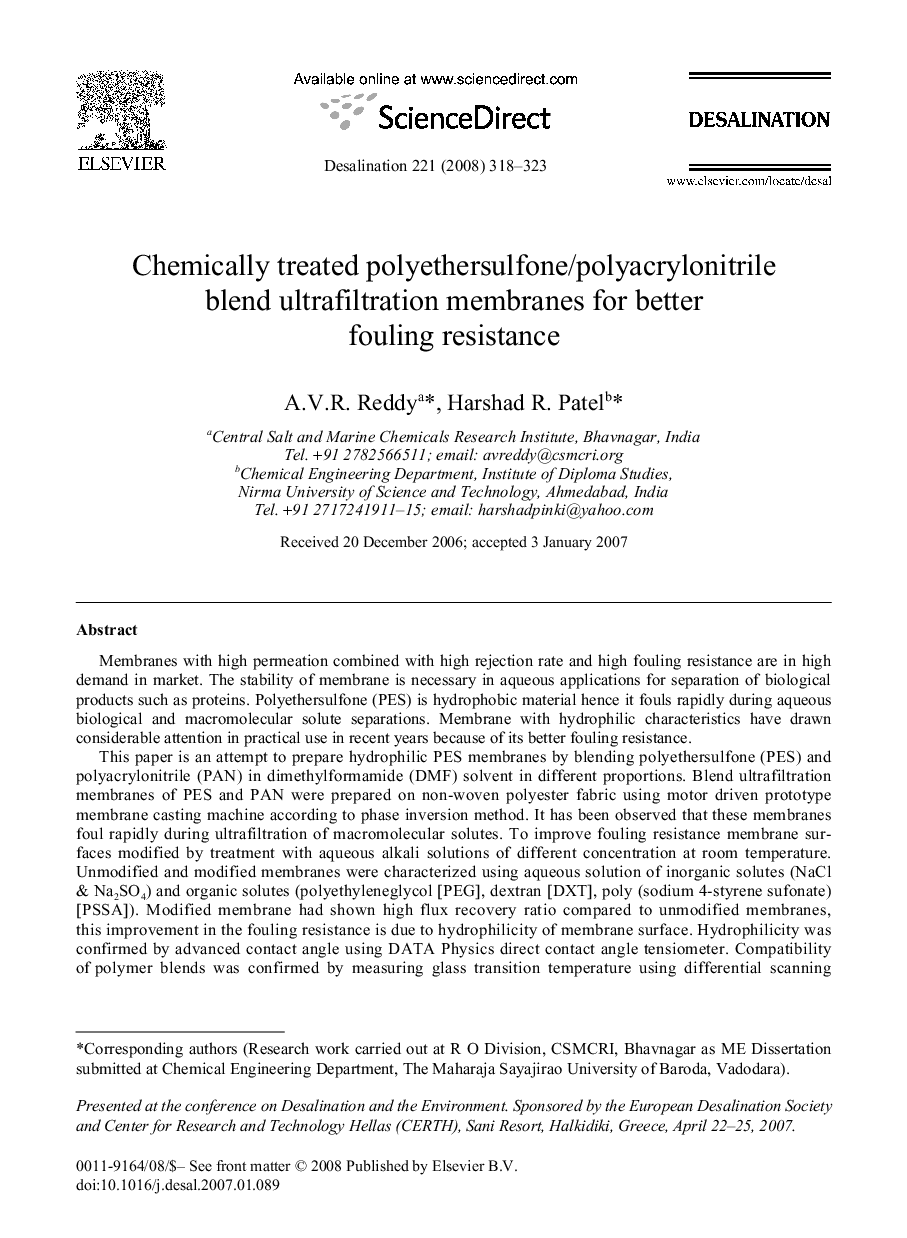| کد مقاله | کد نشریه | سال انتشار | مقاله انگلیسی | نسخه تمام متن |
|---|---|---|---|---|
| 627637 | 1455469 | 2008 | 6 صفحه PDF | دانلود رایگان |

Membranes with high permeation combined with high rejection rate and high fouling resistance are in high demand in market. The stability of membrane is necessary in aqueous applications for separation of biological products such as proteins. Polyethersulfone (PES) is hydrophobic material hence it fouls rapidly during aqueous biological and macromolecular solute separations. Membrane with hydrophilic characteristics have drawn considerable attention in practical use in recent years because of its better fouling resistance.This paper is an attempt to prepare hydrophilic PES membranes by blending polyethersulfone (PES) and polyacrylonitrile (PAN) in dimethylformamide (DMF) solvent in different proportions. Blend ultrafiltration membranes of PES and PAN were prepared on non-woven polyester fabric using motor driven prototype membrane casting machine according to phase inversion method. It has been observed that these membranes foul rapidly during ultrafiltration of macromolecular solutes. To improve fouling resistance membrane surfaces modified by treatment with aqueous alkali solutions of different concentration at room temperature. Unmodified and modified membranes were characterized using aqueous solution of inorganic solutes (NaCl & Na2SO4) and organic solutes (polyethyleneglycol [PEG], dextran [DXT], poly (sodium 4-styrene sufonate) [PSSA]). Modified membrane had shown high flux recovery ratio compared to unmodified membranes, this improvement in the fouling resistance is due to hydrophilicity of membrane surface. Hydrophilicity was confirmed by advanced contact angle using DATA Physics direct contact angle tensiometer. Compatibility ofpolymer blends was confirmed by measuring glass transition temperature using differential scanning calorimetry (DSC). For measurement of rejection of macromolecular solutes gel permeation chromatography was used.
Journal: Desalination - Volume 221, Issues 1–3, 1 March 2008, Pages 318-323